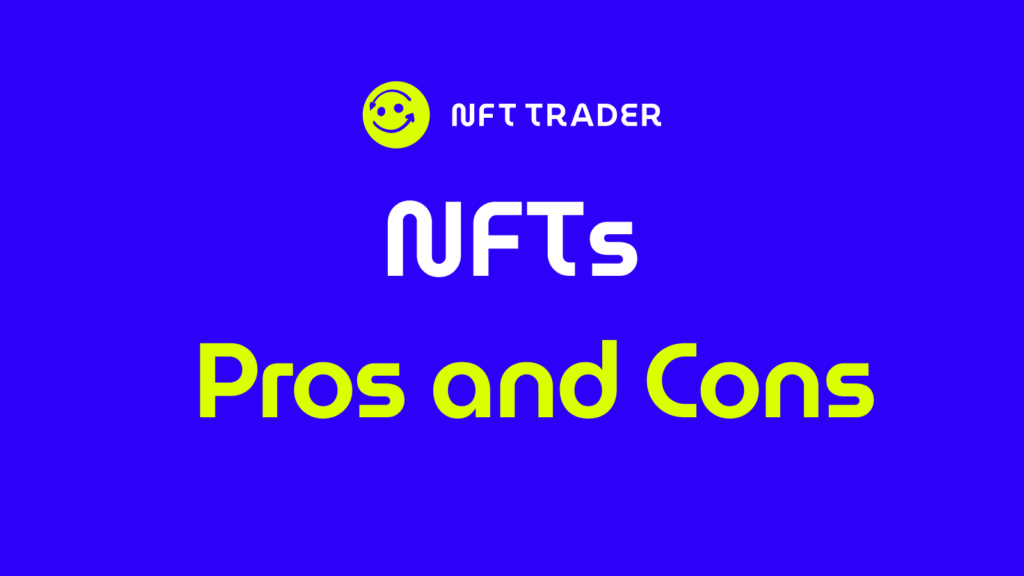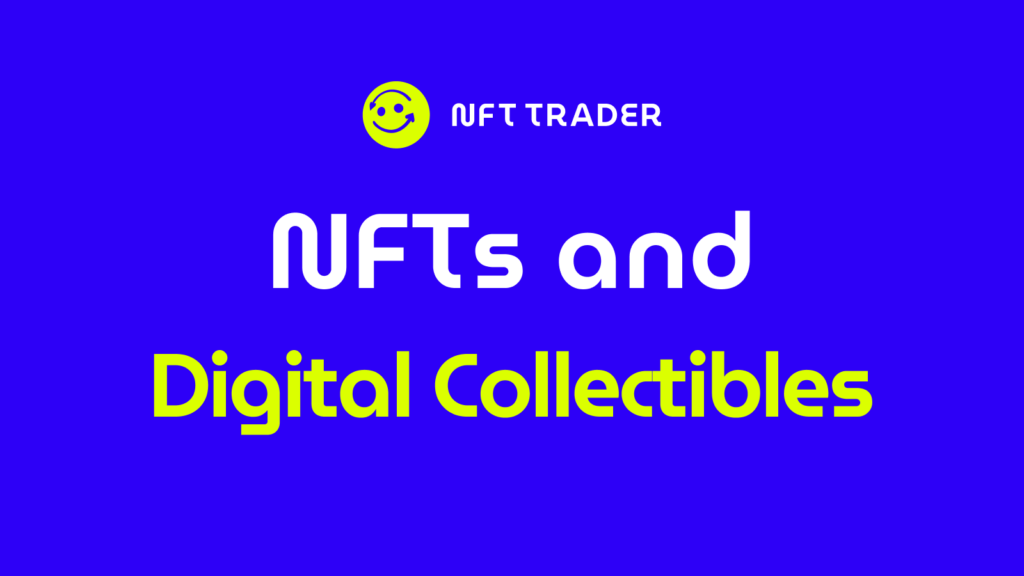NFT: revolutionary innovation or a scam? An objective analysis

Since mid-2010’s, the concept of Non-Fungible Tokens (NFTs) has pervaded public discourse on numerous occasions, occasionally even referred to as “digital assets.”
Originating on the Ethereum blockchain, a selection of such tokens gained significant traction within the years 2016 and 2017. Notable instances include CryptoKitties, CryptoPunks, and Axie Infinity, which emerged as early proponents of this particular standard.
Of particular interest is the diversified scope of applications that these projects introduced from their inception. CryptoKitties, for instance, established themselves as dynamic digital collectibles, characterized by an innovative breeding mechanism facilitating the creation of novel iterations through the mating of two digital feline entities. In a similar vein, Axie Infinity pursued a comparable trajectory, capitalizing on the utilitarian value of NFTs as integral components within the framework of in-game assets. Notably, the original CryptoPunks collection, comprising 10,000 NFTs, occupies a prominent position within this landscape.
Regrettably, NFTs are at times associated with instances of scams and market manipulation, often attributed to their decentralized nature.
Summary:
- The Revolutionary Potential of NFTs
- Criticism and Concerns Surrounding NFTs
- The Debate: Scam or Legitimate Innovation?
- How to Navigate the NFT Space Safely
The Revolutionary Potential of NFTs
Definition and Origins of NFTs
Non-Fungible Tokens (NFTs) are a type of digital asset that represent ownership or proof of authenticity of a unique item, piece of content, or digital object using blockchain technology. Unlike cryptocurrencies such as Bitcoin or Ethereum, which are interchangeable and hold equal value, NFTs are indivisible and each possesses distinct attributes that make them one-of-a-kind. In the past, we’ve also introduced the NFTs to the general public in this article: What is an NFT ?
NFTs gained prominence as a concept and technology in the mid-2010s, with the Ethereum blockchain playing a pivotal role in their development. The introduction of Ethereum’s ERC-721 standard in 2017 paved the way for the creation and trading of NFTs. This standard allowed developers to tokenize digital assets, enabling the ownership and transfer of unique items on the blockchain.
The concept of NFTs revolutionized digital ownership by providing a secure and transparent way to prove the authenticity and scarcity of digital assets. This breakthrough found initial application in the world of digital art and collectibles, where creators could tokenize their work and sell it as a unique digital asset. The NFT boom led to the emergence of digital marketplaces dedicated to buying, selling, and trading these unique tokens.
The decentralized nature of NFTs, often associated with blockchain technology, has contributed to their popularity but has also exposed them to challenges such as scams and market manipulation. The transparent and immutable nature of the blockchain makes ownership and transaction history verifiable, but it also demands users’ vigilance in navigating a relatively nascent and dynamic ecosystem.
Innovative Uses and Applications
Non-Fungible Tokens (NFTs) have emerged as a technological breakthrough that has transcended their origin as digital assets to revolutionize various industries through innovative applications. NFTs represent a seismic shift in the concept of ownership, enabling the tokenization of unique digital items, authenticated by blockchain technology. This novel paradigm has given rise to a plethora of creative and transformative use cases across diverse sectors.
One of the most notable domains where NFTs have left an indelible mark is the art world. Artists, creators, and collectors have embraced NFTs as a means to establish verifiable provenance, rarity, and ownership of digital artworks. This has not only disrupted traditional art market dynamics but also empowered artists to directly engage with their audience, offering limited edition pieces and interacting with buyers in unprecedented ways.
In the realm of gaming and virtual realities, NFTs have ushered in a new era of digital asset ownership. Gamers can now possess and trade in-game items as NFTs, imbuing virtual assets with real-world value. This innovation has transformed the economics of gaming, introducing a level of ownership that was previously unattainable in digital environments.
Industries beyond entertainment have also embraced the potential of NFTs. In real estate, blockchain-based platforms allow the buying and selling of virtual land parcels as NFTs, laying the foundation for creative applications in urban planning, architectural visualization, and more. Fashion brands have begun exploring NFTs to ensure the authenticity and scarcity of luxury goods, catering to a digitally savvy audience that values uniqueness and provenance.
The utility of NFTs extends into education and research, offering creators and institutions the ability to monetize exclusive content or insights. Furthermore, NFTs have facilitated novel fundraising avenues, enabling celebrities, artists, and philanthropists to auction off unique tokens for charitable causes, bridging the worlds of art and activism.
Identity verification and digital citizenship represent yet another arena where NFTs demonstrate their potential. These tokens can act as verifiable identifiers, offering secure access to online platforms, digital services, and even conferring ownership of digital personas.
In essence, the innovative applications of NFTs transcend mere digital ownership to reshape industries and redefine value attribution. Their impact spans from the arts to gaming, fashion, education, charity, and identity verification, signaling a paradigm shift in how we interact with and attribute value to the digital realm. As this technology continues to evolve, it holds the promise of continually expanding the horizons of innovation across an array of sectors.
Interested on other usage of NFTs ? Here a specified article related to this: What can you do with an NFT? Effective ways to use NFTs
Impact on Digital Ownership and Copyright
NFTs have effectively addressed the challenge of digital ownership, a complex issue that arises from the ease of replicating files across different devices. When contemplating this scenario, it becomes apparent that a digital file residing on one computer can be duplicated onto another, making it nearly impossible to ascertain the rightful owner of the original file. This underscores the significance of comprehending the pivotal role NFTs play in this context.
An NFT encapsulates an inherent “entity” that is attributed to the creator of the underlying smart contract. Over time, the creator reserves the option to relinquish ownership of said smart contract. Typically, the rightful owner is the originator of the artistic content, serving as the beneficiary of potential royalties, especially within the realm of creative works.
NFTs generally operate under a CC0 license, with Nouns emerging as pioneers in this regard. However, NFTs extend beyond the confines of art and collectibles, as they can encompass diverse digital assets. These tokens can also represent files hosted on decentralized systems like IPFS, a technology that ensures secure and decentralized file storage. This capability makes NFTs applicable to scenarios where files symbolize academic degrees or other vital certifications.
In essence, NFTs offer a transformative solution to the intricacies of digital ownership, leveraging blockchain technology to establish clear ownership attribution for digital assets, transcending conventional boundaries and encompassing a broad spectrum of applications beyond the realms of art and collectibles.

Criticism and Concerns Surrounding NFTs
Market Speculation and Volatility
The NFT space is currently marked by a considerable amount of commotion. The inherently public nature of blockchain data allows individuals to leverage this information to their benefit, leading to instances of strategic exploitation. Certain collections within this domain face susceptibility to speculative activities, often triggered by signals within the blockchain or through the dissemination of information by influential figures on social media platforms.
In this landscape characterized by specific market dynamics and the inherent scarcity of NFT assets, a notable degree of volatility prevails. Significant trading volumes can rapidly materialize around a particular project within a short span, frequently tied to imminent news releases. However, this heightened activity can swiftly recede as interest dwindles following the initial surge, resulting in decreased traction post-announcement.
Given the fluctuating and potentially precarious nature of NFT markets, a comprehensive due diligence process is imperative. Understanding the project’s creators and their objectives is crucial in navigating this terrain effectively.
Potential Legal and Ethical Issues
The dynamic world of NFTs brings to the forefront a spectrum of potential legal and ethical quandaries. As these digital assets intertwine technology, creativity, and finance, several concerns arise that warrant careful consideration.
- Copyright and Intellectual Property: The tokenization of digital content as NFTs raises questions about copyright and intellectual property rights. Creators must navigate the complex terrain of licensing agreements, fair use, and ownership attribution, ensuring that their work’s originality and value are respected within the NFT ecosystem.
- Counterfeit and Plagiarism: The immutable nature of blockchain data does not inherently prevent the creation of counterfeit or plagiarized NFTs. The risk of unauthorized reproductions poses a challenge to creators and collectors alike, necessitating mechanisms to verify authenticity and protect against fraud.
- Regulatory Compliance: NFT markets intersect with financial transactions, leading to regulatory concerns. Legal frameworks governing securities, taxes, and anti-money laundering (AML) regulations can impact NFT trading, necessitating compliance measures that align with evolving laws.
- Privacy and Data Protection: The transparent nature of blockchain contrasts with privacy expectations. Concerns arise over the potential for personal information to be linked to NFT transactions, demanding privacy-focused solutions to strike a balance between transparency and individual data protection.
- Environmental Impact: The energy-intensive process of validating blockchain transactions, particularly for Proof of Work (PoW) systems, has raised environmental concerns. NFT platforms and creators are under scrutiny to explore more sustainable alternatives or mitigate their carbon footprint.
- Cultural Appropriation: NFTs that tokenize cultural artifacts or artistic expressions can inadvertently promote cultural appropriation. Ensuring that the rights and respect for the origins of these works are upheld is a vital ethical consideration.
- Market Manipulation: The NFT market’s relative youth and decentralized nature can expose it to market manipulation. Pump-and-dump schemes, artificially inflating values, and price manipulation pose risks, necessitating vigilance and regulatory responses.
- Lack of Consumer Protections: Compared to traditional markets, NFTs often lack established consumer protections. Buyers might face challenges in seeking refunds, verifying product descriptions, or addressing disputes, underscoring the need for standardized safeguards.
- Digital Divide and Accessibility: While NFTs have opened new economic opportunities, accessibility concerns arise due to disparities in internet access and technological literacy. Addressing these disparities is essential to ensure inclusivity within the NFT ecosystem.
The Debate: Scam or Legitimate Innovation?
Arguments in Favor of NFTs as Innovation
The emergence of NFTs (Non-Fungible Tokens) has sparked a discourse on their role as a pioneering innovation with several compelling arguments in their favor. These digital tokens, underpinned by blockchain technology, offer unique attributes that contribute to their distinct value proposition:
- Digital Ownership Revolution: NFTs have revolutionized the concept of digital ownership by providing a secure and transparent mechanism for verifying ownership and provenance of digital assets. This innovation empowers creators and collectors to establish the uniqueness and authenticity of their digital creations, addressing long-standing challenges in the digital world.
- Monetizing Digital Creations: NFTs unlock new avenues for creators to monetize their digital content. Artists, musicians, and writers can tokenize their work, enabling them to directly sell and distribute digital assets, eliminating intermediaries and fostering more direct relationships with their audience.
- Enhanced Artist-Centric Economy: NFTs have reimagined the economic landscape for artists. By enabling royalties and secondary sales, artists can benefit from the increasing value of their creations in the secondary market, promoting a more sustainable revenue stream and recognizing their ongoing contribution to their work’s popularity.
- Immutable Provenance and Transparency: The blockchain’s immutable ledger ensures a transparent and tamper-proof record of ownership, transfers, and transactions. This traceability is particularly valuable in combating counterfeiting, plagiarism, and fraudulent activities across various industries.
- Access to Exclusive Experiences: NFTs facilitate the creation of limited editions and exclusive experiences. These tokens grant access to unique events, virtual worlds, and interactions that hold value for enthusiasts seeking one-of-a-kind encounters.
- Expanding Digital Economies: NFTs transcend traditional boundaries, enabling the integration of digital assets into various sectors such as gaming, art, collectibles, real estate, and more. This expansion cultivates new economic ecosystems and revenue streams, redefining how value is attributed to digital assets.
- Empowerment for Underrepresented Artists: NFTs democratize access to global markets, providing a platform for underrepresented artists and creators to showcase their work and reach a broader audience without the limitations of traditional gatekeepers.
- Innovation in Ownership Models: NFTs introduce novel ownership models. Fractional ownership, where NFTs can be divided and shared among multiple owners, allows broader participation in high-value assets.
- Interactivity and Engagement: NFTs enable interactive experiences, fostering deeper engagement between creators and their audience. Tokenized assets can evolve over time, allowing creators to enhance or alter their work in collaboration with their supporters.
- Leveraging Smart Contracts: The programmability of NFTs through smart contracts introduces automation to ownership. These contracts can enforce specific conditions, such as automatically distributing royalties or facilitating dynamic interactions based on predefined criteria.
In summary, the arguments in favor of NFTs underscore their role as a transformative innovation that bridges the digital and physical worlds, empowering creators, enabling unique ownership experiences, and reshaping various industries through enhanced transparency and value attribution.
Arguments against NFTs (Scam Accusation)
The emergence of NFTs (Non-Fungible Tokens) has ignited both enthusiasm and skepticism, with critics raising valid concerns that merit consideration. Among the arguments against NFTs, accusations of scams and fraudulent activities have garnered attention. These concerns revolve around several key points:
- Lack of Regulation and Oversight: The NFT space operates in a decentralized environment with limited regulatory oversight. This lack of regulation can expose collectors to potential scams, as fraudulent projects can thrive without proper checks and balances.
- Proliferation of Copycat Projects: The relative ease of creating NFTs has led to an influx of copycat projects and opportunistic individuals seeking to capitalize on the NFT hype. These projects might lack genuine value or substance, enticing unsuspecting participants with promises that are not fulfilled.
- Misleading Marketing and Hype: Some NFT projects employ misleading marketing tactics and excessive hype to attract collectors. Overblown claims and promises of astronomical returns can obscure the true nature and viability of the projects, leading individuals to acquire something without fully understanding the risks.
- Unverified Credentials and Ownership: Certain NFT projects claim endorsements or partnerships that are not thoroughly verified. This can lead to the exploitation of celebrity names or affiliations to build false credibility.
- Potential Pump-and-Dump Schemes: The relatively illiquid nature of some NFT markets can make them susceptible to pump-and-dump schemes. Unscrupulous actors may artificially inflate the value of a particular NFT through coordinated buying, only to sell off their holdings at a profit.
- Inadequate Due Diligence: The excitement surrounding NFTs can lead to impulsive expenses without proper due diligence.
- Ephemeral Value: The perceived value of NFTs can be volatile and ephemeral, susceptible to sudden changes in market sentiment. Projects that gained attention due to celebrity endorsements or speculative activity might experience rapid declines in value once the initial hype subsides.
- Lack of Tangible Ownership: Critics argue that NFT ownership often lacks the tangibility associated with physical assets. Unlike traditional collectibles or art pieces, NFTs may not hold intrinsic value or utility beyond their digital existence, making their valuation and ownership precarious.
- Environmental Concerns: The energy-intensive nature of blockchain networks, especially those utilizing Proof of Work (PoW) consensus mechanisms, raises environmental concerns. Critics contend that the environmental impact of NFT creation and trading can overshadow potential benefits.
In conclusion, critics highlight the potential for scams and fraudulent activities within the NFT ecosystem due to the decentralized nature of the market, lack of regulation, and the influx of opportunistic actors. Skeptics emphasize the importance of conducting thorough research and exercising caution to mitigate risks and ensure informed decision-making in this rapidly evolving space.

How to Navigate the NFT Space Safely
Recognizing Genuine Opportunities
Genuine opportunities are consistently present in the NFT landscape. It’s essential to conduct thorough research regarding the team, project contributors, and the potential involvement of a company. Scrutinize the project’s backers and supporters to gauge its credibility and trajectory.
At times, exercising patience rather than being an early adopter can prove advantageous. Monitoring how a project evolves over time allows for a more informed decision. An active online community, particularly on social platforms, often signifies a legitimate project that people are genuinely invested in and satisfied with.
Remaining vigilant against FOMO (Fear of Missing Out) and undue influence from individuals with high social status, such as influencers, is crucial. Base your decisions on well-founded research rather than being swayed solely by popular sentiment.
In essence, diligent research, prudent patience, community engagement, and a discerning approach to influencers collectively contribute to making informed choices in the dynamic NFT space.
Avoiding Common Scams and Pitfalls
Scams in the NFT space, are always around the corner, as we mentioned here: Safe NFT trading tips: how to identify and avoid NFT scams
Scammers have evolved their tactics, employing strategies such as direct messages on social media or even screen-sharing calls on public platforms. When an opportunity appears exceptionally attractive, it’s often prudent to exercise caution and skepticism. Favoring well-established platforms like OpenSea, Rarible, or NFTTrader for managing your NFT transactions, including buying, selling, and trading, can significantly mitigate risks.
Bookmarking these reputable platforms and actively following their social channels is essential. This approach ensures that you remain informed about the latest developments and updates within these marketplaces, allowing you to stay ahead of potential risks and make informed decisions.



